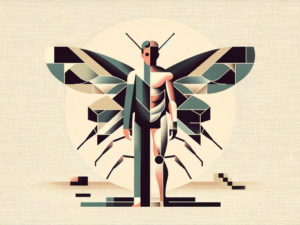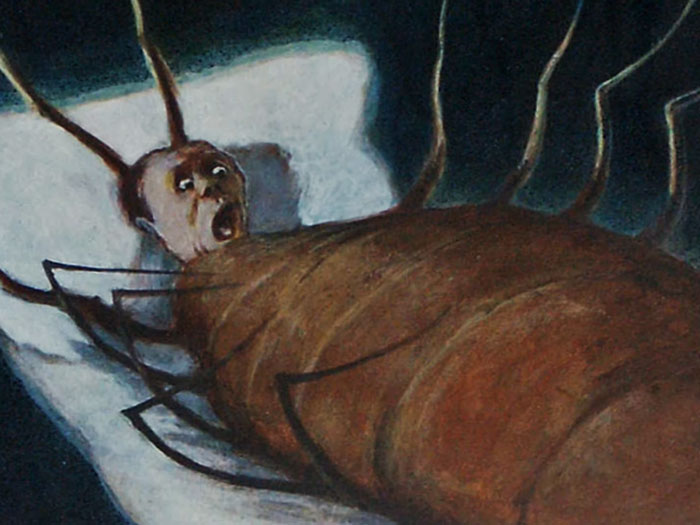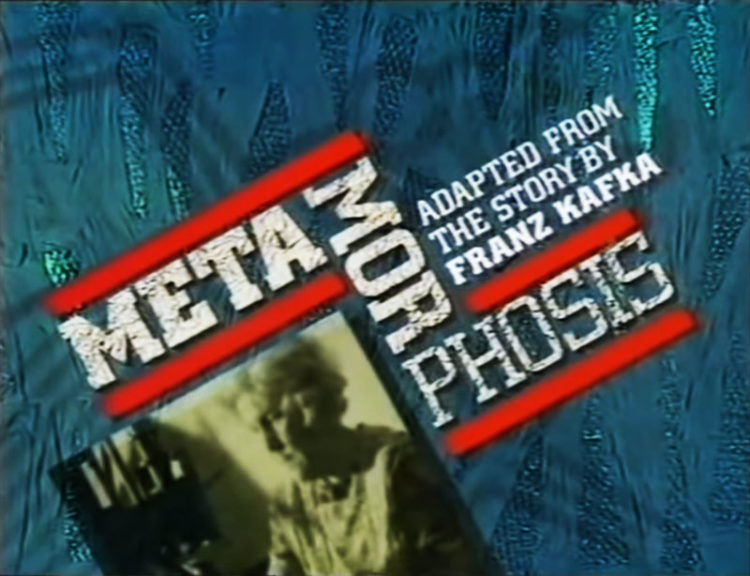Summary of “The Metamorphosis”, a novella written by Franz Kafka, which was first published in 1915. It tells the story of Gregor Samsa, a traveling salesman who wakes up one morning to find himself transformed into a monstrous insect-like creature. The story explores themes of alienation, identity, and the absurdity of life. Kafka’s work is renowned for its complex characters, intricate symbolism, and the profound philosophical and existential questions it raises.
Short Summary
Gregor Samsa, a hardworking traveling salesman, awakens one day to find himself transformed into a giant insect. His new form renders him unable to work and ostracized from his family. Initially, they are concerned for him, but as time passes, their sympathy turns to burden and resentment.
 Gregor struggles to adapt to his new condition and the limited space of his room, which becomes his entire world. He overhears his family discussing their financial troubles, worsened by his inability to support them. Despite his own plight, Gregor worries about his family’s well-being.
Gregor struggles to adapt to his new condition and the limited space of his room, which becomes his entire world. He overhears his family discussing their financial troubles, worsened by his inability to support them. Despite his own plight, Gregor worries about his family’s well-being.
As Gregor’s sister, Grete, takes on the role of his caretaker, she begins to resent the responsibility. The family takes in boarders to make ends meet, further alienating Gregor. He becomes a source of shame and disgust to them.
One evening, while trying to escape his room, Gregor is seen by the boarders, who then decide to leave, depriving the family of income. Following this incident, Grete convinces their parents that they must get rid of Gregor. He is now a creature they hardly recognize as their son or brother.
Feeling rejected and a burden, Gregor retreats to his room. He dies alone, from both the physical injuries inflicted by his father and the despair of his condition. The family discovers his dead body the next morning. With Gregor’s death, the family feels a sense of relief and looks forward to a better future. They move out of the apartment, optimistic and liberated from the burden of caring for him, contemplating new opportunities as they leave their old lives behind.
Full Plot Summary of The Metamorphosis
Part One: Gregor’s Transformation
Gregor Samsa, a diligent traveling salesman, experiences a grotesque transformation, waking up as a monstrous insect. Confined to his bed, he finds movement difficult and his new body repulsive. Despite this, his primary concern is his job, as he is the sole breadwinner for his family.
His employer sends a chief clerk to investigate Gregor’s unusual absence. Meanwhile, Gregor’s attempts to communicate and maneuver his transformed body fail. His family and the clerk are on the other side of his bedroom door, bewildered by his strange voice and anxious about his well-being.
After much effort, Gregor manages to open the door. His appearance terrifies the clerk and his family. The clerk flees the apartment, and Gregor’s father, in a panicked state, shoos Gregor back into his room with a stick and a rolled-up newspaper. In the process, Gregor injures himself, squeezing back through the door.
Once inside, Gregor’s father slams the door shut. Gregor, now alone and injured, is left to reflect on the grim reality of his new existence. His physical transformation has begun to mirror his family’s financial desperation and the alienating nature of his job. The Samsas face a stark future, with their son and brother now an unrecognizable creature, sparking a mixture of horror, sympathy, and the dawning realization of the burden he has become.
Part Two: The Family’s Struggle and Adaptation
In the second part of “The Metamorphosis”, the focus shifts to how Gregor’s family copes with his condition and the resulting financial strain. Gregor becomes increasingly aware of the burden he has become. His sister Grete takes on the responsibility of caring for him, bringing him food and cleaning his room.
Initially, Grete is gentle and considerate, trying to understand what Gregor can eat and how to make him comfortable. She notices that Gregor hides under the couch when she enters, not wanting to frighten her with his appearance. Grete rearranges his room to give him more space to crawl, but this act signifies a shift in how the family sees Gregor, no longer treating him as a member of the family but as something other.
The family’s financial situation worsens. Gregor’s father returns to work for the first time since the collapse of his own business five years earlier. His mother takes up sewing, and Grete starts sales work to make ends meet. The family rents out a room to three lodgers to earn additional income, further encroaching on Gregor’s freedom and space, as his room becomes a catch-all for unwanted items.
As the family becomes busier and more exhausted, their initial sympathy for Gregor fades. Grete, once his primary caretaker, grows resentful of the chores associated with her brother’s new condition. The family stops eating meals together, symbolizing their disintegration.
This part concludes with a dramatic scene where Gregor briefly escapes his room. The lodgers spot him, and the family is terrified that they will leave because of the shock. This incident marks a turning point, solidifying the family’s view of Gregor as a problem that they need to deal with once and for all.
Part Three: Rejection, Death, and Liberation
The final part of “The Metamorphosis” brings the Samsa family’s tension to a climax. The presence of the three lodgers in the apartment imposes additional stress on the family, who must keep Gregor’s existence a secret. Gregor, increasingly neglected and isolated, becomes a mere afterthought to his family, who now view him as an unbearable burden.
The climactic moment occurs when the lodgers, having been attracted by the violin playing of Grete, witness Gregor in his insect form. This revelation leads to an outburst, with the lodgers threatening legal action and refusing to pay for their lodgings due to the disturbance caused by Gregor. This incident serves as the final straw for the family, particularly for Grete, who declares that they must rid themselves of “it”. Her use of the word “it” signifies the complete dehumanization of Gregor in their eyes. She insists that Gregor is no longer Gregor, as they can no longer recognize anything human about him.
Confronted with the unanimous verdict of his family, Gregor retreats to his room. Wounded both physically and emotionally, he finally gives up on life. His death is quiet and goes unnoticed until the cleaning lady discovers his body the next morning.
Following Gregor’s death, the family feels a mixture of sorrow and significant relief. The lodgers are dismissed, and the family takes a day off to recover and go on an outing to the countryside. During this trip, Mr. and Mrs. Samsa notice that Grete has grown into a pretty and well-built young lady, and they contemplate her future marriage prospects. The story ends with the family feeling optimistic, with the weight of Gregor’s existence lifted from their shoulders. They consider moving to a smaller, more affordable apartment, symbolizing a fresh start and the possibility of a brighter future.
Interesting Facts
- Author’s Reflection of Life: Kafka’s own feelings of isolation and alienation resonate through Gregor Samsa’s character. Kafka himself experienced similar familial pressures and a sense of being an outsider.
- Existentialist Themes: The novella is a seminal work of existential literature, delving into themes of absurdity, the search for meaning, and the individual’s place in the world.
- Lack of Explanation: Kafka never explains why Gregor transforms into an insect, which adds to the story’s unsettling nature and has led to numerous interpretations.
- Cultural Impact: The term “Kafkaesque” stems from Kafka’s writing style and themes, which are vividly manifested in “The Metamorphosis”.
- Initial Reception: The story was not widely known during Kafka’s lifetime but gained recognition and acclaim after his death, influencing a vast range of writers and artists.
- Kafka’s Wishes: Kafka asked his friend Max Brod to burn his manuscripts, including “The Metamorphosis”, upon his death. Brod ignored this request, publishing Kafka’s works instead.
- Symbolism: The story is rich with symbols, from the insect itself to the picture of the woman in furs that Gregor tries to save during his transformation.
- Gregor’s Profession: Kafka specifically chose Gregor’s profession as a traveling salesman because it reflected a sense of transience and pressure to succeed.
- Influences: Kafka was influenced by existentialist and absurdist philosophy, and his work prefigures the writings of Jean-Paul Sartre and Albert Camus.
- Gregor’s Insect Form: Kafka never clearly defines what kind of insect Gregor becomes, leaving it to the imagination of the reader and various interpretations by artists.
- Family Dynamics: The novella explores family dynamics and the pressures of societal expectations, reflecting the author’s own complex relationship with his family.
Adaptations of The Novel
“The Metamorphosis” has inspired numerous adaptations across various media. Here are some of the most notable ones:
Films and Television
- “Metamorphosis” (1975): A film adaptation directed by Jan Nemec.
- “Franz Kafka’s The Metamorphosis” (2012): A live-action feature film directed by Chris Swanton.
Theater
“Metamorphosis” (1989): A stage adaptation by Steven Berkoff, which is frequently revived around the world.
Ballet
“The Metamorphosis” (2013): A Royal Ballet production choreographed by Arthur Pita, performed at the Royal Opera House in London.
Opera
“The Metamorphosis” (1983): An opera by Philip Glass.
Visual Art
“The Metamorphosis of Mr. Samsa” (1977): A short animated film by Caroline Leaf, interpreting the story through sand animation.
Video Games
“Metamorphosis” (2020): A first-person adventure video game developed by Ovid Works, inspired by Kafka’s novella.
Music
“The Metamorphosis” (2017): A song by Ross Avant, directly inspired by Kafka’s work.
Graphic Novels
“The Metamorphosis” (2007): A graphic novel adaptation by Peter Kuper.
Frequently Asked Questions About “The Metamorphosis”
What does Gregor’s transformation symbolize?
Gregor’s transformation into an insect symbolizes extreme alienation and the loss of humanity. It’s often interpreted as a reflection of the individual’s struggle against an indifferent society or the crushing force of modernity. The metamorphosis also represents the way Gregor has been dehumanized by his work and his family’s expectations.
Is “The Metamorphosis” a critique of capitalism?
Many readers see “The Metamorphosis” as a critique of capitalism and its dehumanizing effects. Gregor’s transformation renders him unable to work, making him a liability rather than an asset to his family, which parallels the way workers can be discarded when they’re no longer productive.
How does Kafka explore identity in the novel?
Kafka delves into the concept of identity by stripping Gregor of his human form and examining how his self-perception and the perception of others change as a result. The story questions the stability of identity and how it is shaped by external circumstances and social roles.
What is the significance of the ending of “The Metamorphosis”?
The ending of “The Metamorphosis” is significant because it highlights the family’s relief and newfound freedom following Gregor’s death. This outcome raises questions about familial obligations, the nature of sympathy, and the desire for self-fulfillment. It suggests a rebirth for the family, as they can now pursue a more hopeful future without the burden of Gregor’s existence.
How does Kafka use irony in “The Metamorphosis”?
Kafka employs irony throughout the novella, particularly in the way Gregor’s insect form contradicts his human emotions and desires. Additionally, there’s irony in the family’s reaction; they become more functional and emotionally detached as Gregor, despite his monstrous form, becomes more introspective and human in his thoughts and feelings.
Why doesn’t Kafka explain the reason for Gregor’s transformation?
Kafka’s choice not to explain the cause of Gregor’s transformation adds to the story’s surreal and allegorical nature. It forces readers to focus on the consequences of the metamorphosis rather than its origins, thereby enhancing the novel’s themes of alienation and the absurdity of life.
How does “The Metamorphosis” reflect Kafka’s personal life?
The novella mirrors Kafka’s personal feelings of being trapped in bureaucratic and familial structures that he found oppressive. Gregor’s sense of duty to his family and his subsequent alienation reflects Kafka’s own struggles with his sense of identity and obligations, particularly in relation to his father.
My Brief Review
Franz Kafka’s ‘The Metamorphosis’ is a masterful exploration of alienation and human resilience. Its stark portrayal of a man’s transformation into an insect is as compelling as it is disturbing, crafting a narrative that’s both deeply personal and universally relatable. Kafka’s ability to navigate the complexities of identity and societal expectation with such surreal and visceral imagery is nothing short of genius.
🎭 Is Gregor’s plight a mirror to our own or simply the ramblings of a troubled mind? Share your most outlandish thoughts in the comments below! 🐛💭👇



Comments